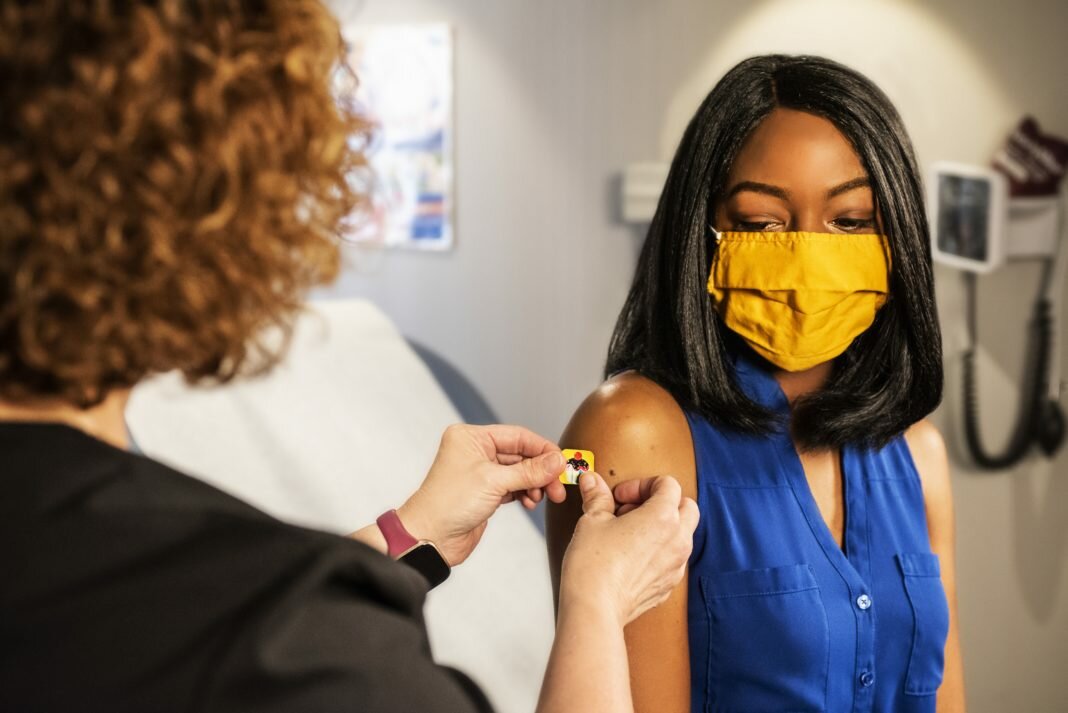Brief • 2 min Read

Last week, the CDC announced that fully vaccinated Americans can safely be in public spaces without wearing masks or practicing social distancing. However, only 41% of US adults report receiving a complete dose of the COVID-19 vaccine and the national vaccination rate has plummeted. According to the CDC, the average number of doses administered each day in the US has fallen by nearly 50% since mid-April (from 3.4 million to 1.8 million).
When it comes to getting the COVID-19 vaccine, relaxed restrictions are a perk, but protection is the goal
After more than a year of pandemic-related restrictions, there’s an eagerness to return to “normal.” Four in 10 Americans that have received or plan to receive a COVID-19 vaccine have done so because they want to be able to be in public spaces without wearing a mask or social distancing. But there’s a caveat. Those restrictions were put in place in the interest of public health and safety – and that idea has been at the root of most COVID-19 vaccination decisions. Protecting oneself (68%) and protecting others (51%) from contracting COVID-19 remain the primary reasons that people choose or plan to get inoculated.
Even in the wake of the CDC’s update, Americans’ safety-first mindset prevails. While a quarter of US adults that have received or plan to receive a COVID-19 vaccine were encouraged to do so by the more relaxed guidelines, significantly more – 40% — have been motivated by a concern that other people will stop wearing masks in public before being fully vaccinated.
The CDC changed its safety recommendations, but that hasn’t necessarily changed Americans’ vaccination plans
So far, the new guidelines have had a somewhat indirect impact on Americans’ vaccine adoption. While many are taking CDC recommendations into consideration, the percentage of those that are actually getting vaccinated has been largely unimpacted. In a study conducted on behalf of TIME from May 7 – 10, 2021, less than 10% of vaccinated adults reported receiving the first does of the COVID-19 vaccine (or complete single-dose regimen) in the 7 days prior. A follow-up conducted after the CDC’s announcement (May 18-19, 2021), showed that this percentage remained flat. The same can be said regarding the share of adults that report not being vaccinated (around three in 10 both before and after).
That said, these mask and social distancing guidelines are still new — and there’s likely a learning curve for the people, businesses, and even local governments acting on them. For now, they prove that we’re one step closer to a post-pandemic “normal.” But as doors open for immunized Americans moving forward, the CDC’s new recommendations could also start to prove that there’s value in having a filled-in vaccination card.
Methodology
This survey was conducted online within the United States by The Harris Poll on behalf of TIME May 18-19 2021, among 1,075 U.S. adults ages 18 and older. This online survey is not based on a probability sample and therefore no estimate of theoretical sampling error can be calculated. Figures for age, sex, race/ethnicity, education, region and household income were weighted where necessary to bring them into line with their actual proportions in the population. Propensity score weighting was used to adjust for respondents’ propensity to be online. For more information on methodology, please contact Madelyn Franz.
Subscribe for more Insights
Subscribe to our newsletter for the latest trends in business, politics, culture, and more.
Download the Data
Get the full data tabs for this survey conducted online within the United States by The Harris Poll on behalf of TIME between May 18-19 2021, among 1,075 U.S. adults ages 18 and older.
DownloadSubscribe for more Insights
Subscribe to our newsletter for the latest trends in business, politics, culture, and more.
Download the Data
Get the full data tabs for this survey conducted online within the United States by The Harris Poll on behalf of TIME between May 18-19 2021, among 1,075 U.S. adults ages 18 and older.
DownloadRelated Content








